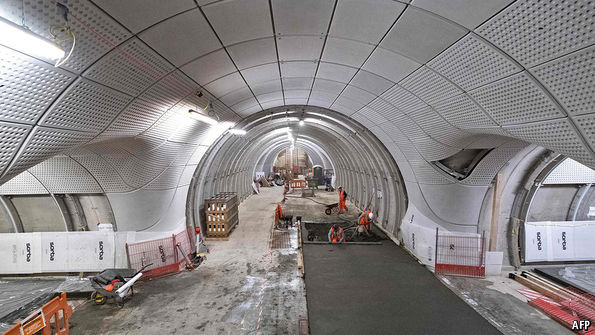Managing financial risk on London’s massive Crossrail project
THE eastbound platform on the Elizabeth line at Farringdon Station in central London is 30 metres below ground. Its length is as striking as its depth. At more than 200 metres, it is almost twice as long as the typical platform on the Tube. When service begins in December 2018, it will increase rail capacity in central London by 10%, thanks to the longer trains. Travellers nearest to the terminal stations at Reading and Heathrow, to the west of the city, and Shenfield and Abbey Wood, to the east, have a shot at the acme of commuter luxury: a seat.
Crossrail, as the £14.8bn ($19bn) infrastructure project is known, is on track to deliver other small miracles. With 85% of the work completed, the project is on-budget and on-time, in spite of its size and complexity. The programme required ten new stations, some with passenger tunnels linking them to existing Tube lines. The Elizabeth line itself will snake through 13 miles (21km) of twinned tunnels, including a section under the Thames. Tunnelling is a risky business. You never can tell if you’ll run into a hold-up. The Crossrail dig has yielded 10,000 items of interest to archaeologists. At Farringdon the diggers …read more









